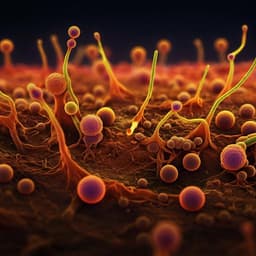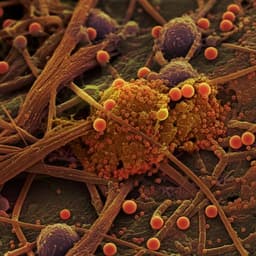
Environmental Studies and Forestry
Spatially consistent microbial biomass and future cellular carbon release from melting Northern Hemisphere glacier surfaces
I. T. Stevens, T. D. L. Irvine-fynn, et al.
Discover the hidden world of microbial communities thriving on melting glaciers, as Ian T. Stevens and colleagues unveil a significant correlation between microbial abundance and glacier melt across multiple continents. This groundbreaking research predicts a staggering release of microbial cells, enriching downstream ecosystems and transforming our understanding of glacial biogeochemical cycling.
Playback language: English
Related Publications
Explore these studies to deepen your understanding of the subject.







